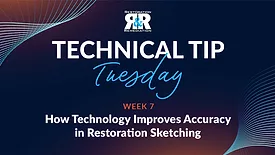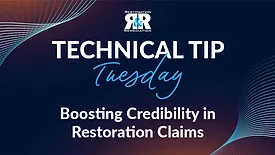Home » Keywords: » working with carriers
Items Tagged with 'working with carriers'
ARTICLES
Technical Tip Tuesday Presented by DocuSketch
Learn how tech-driven documentation protects your team and prevents costly disputes in the restoration claims process
Read More
Technical Tip Tuesday Presented by DocuSketch
How Estimators Can Build a Strong Reputation in Restoration
Your reputation matters. Learn key habits that help estimators earn trust and respect in the restoration industry.
Read More
Technical Tip Tuesday Presented by DocuSketch
Why 360 Imaging Is a Game-Changer for Restoration Documentation and Accuracy
Capture full-room views and create timelines with 360 imaging that boost your accuracy and transparency
Read More
Technical Tip Tuesday Presented by DocuSketch
Boosting Credibility in Restoration Claims
Building trust with insurance carriers through simple, effective communication strategies
Read More
Clean Claims and Helixco Announce Strategic Partnership to Streamline Field Documentation and Intelligent T&M Billing
Helixco and Clean Claims Partner to Deliver Audit-Ready Restoration Billing with Verified Field Data
October 8, 2025
Ask the Expert
Scaling Your Restoration Business and Empowering Veterans
John Tovar shares his insights on disaster response, veteran hiring and building resilient restoration teams.
Read More
Ask the Expert
Balancing the Scales: Water Damage Claims, AOB and Documentation Strategies
Josh Ehmke shares his insights on water damage claims, denials, AOB and contractor predictions
Read More
Ask the Expert
Beyond the Box: Contents Restoration with Strategy, Empathy and Expertise
Jessica Loveless shares expert strategies for contents restoration, leading with empathy on every job
Read More
EVENTS
Conventions and Trade Shows Industry
5/18/26 to 5/21/26
Rosen Shingle Creek
Orlando, FL
United States
ACCESS
Stay ahead of the curve with our eNewsletters.
Get the latest industry updates tailored your way.
JOIN TODAY!Copyright ©2025. All Rights Reserved BNP Media.
Design, CMS, Hosting & Web Development :: ePublishing











